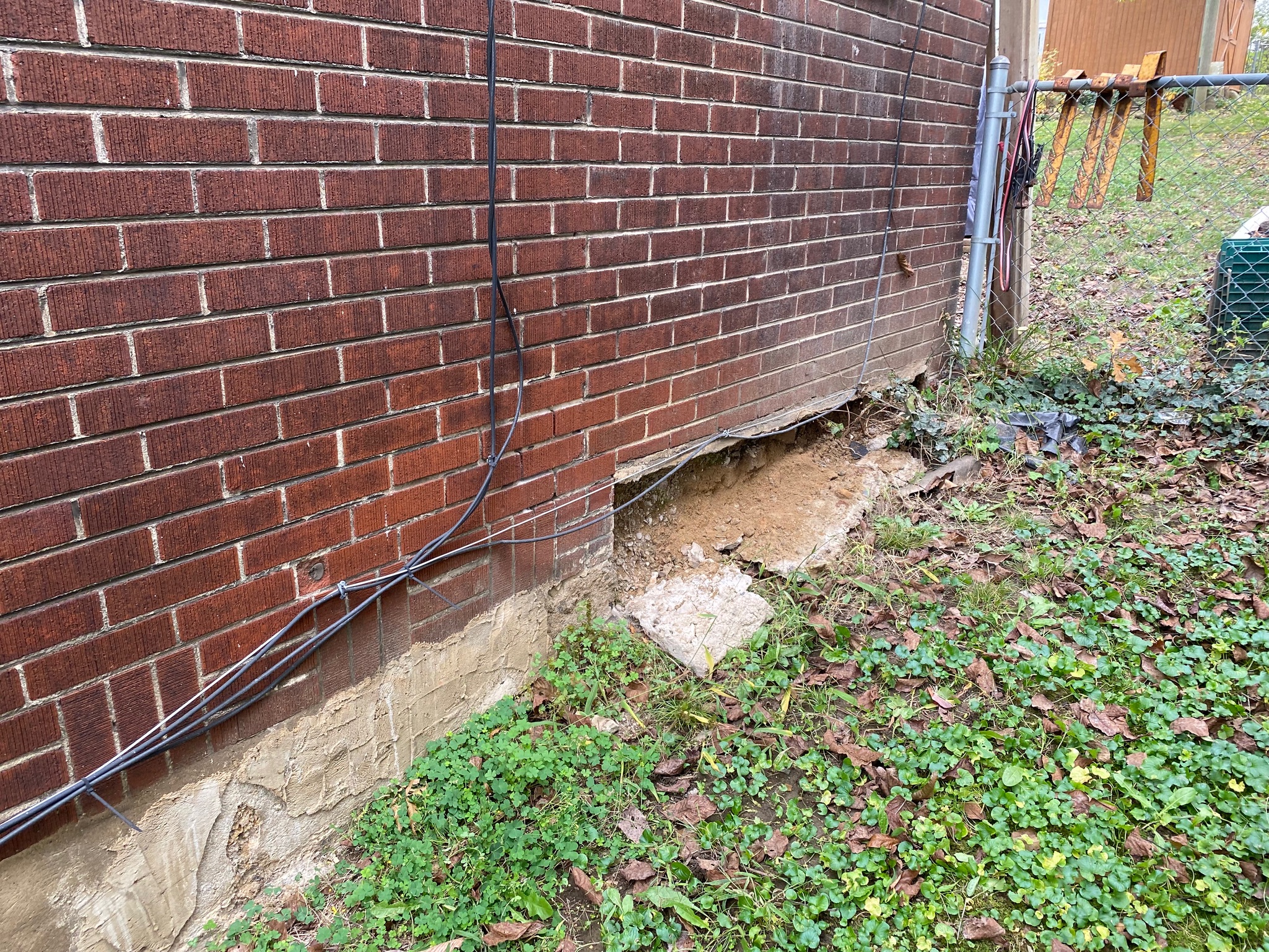
You’ve likely heard the saying, “When it rains, it pours.” But when it pours, does your home’s foundation stand strong? Heavy rain can lead to serious foundation damage if you’re not prepared. It’s crucial to understand ways to guard your home against this risk, from maintaining proper drainage to conducting regular inspections. So, how well-versed are you in these protective measures? There’s a wealth of strategies to explore further in ensuring your home’s foundation remains unscathed, come rain or high water.
Key Takeaways
- Implement proper drainage systems, including surface grading and downspout placement, to prevent water accumulation around foundations.
- Conduct regular inspections, particularly after heavy rain, to detect and address early signs of foundation damage.
- Utilize smart landscaping techniques, such as correct tree placement and yard slope, to facilitate water runoff away from the foundation.
- Install protective systems like French drains and rain barrels to divert water away from the foundation and reduce soil erosion.
- Repair existing cracks and waterproof the foundation using techniques like basement sealing or waterproof membranes to prevent future damage.
Understanding Foundation Damage
While it may seem less important, understanding foundation damage is crucial in preventing it. Foundation stability is the bedrock of your home’s health. You mightn’t be able to see it, but it’s always working hard to keep your home steady and safe. When there’s a problem, you need to act fast.
The first step is to identify the signs. Cracks in the walls, doors that won’t close properly, and uneven floors are all red flags. They’re telling you that your foundation stability is compromised. Don’t ignore these signs. They’re not just cosmetic issues, they’re symptoms of a serious problem that can lead to even bigger headaches down the road.
Moisture control is another key player in this game. Excess water can seep into your foundation, causing it to crack and weaken over time.
That’s why it’s important to control the amount of water around your home. A good moisture control strategy can keep your foundation dry and safe.
The Importance of Proper Drainage
You might be surprised to learn that proper drainage plays a fundamental role in maintaining your home’s foundation. It’s about managing water flow around your property through a variety of methods. These include installing effective drainage systems, careful surface grading, and strategic downspout placement.
Think of your drainage system as a shield, protecting your foundation from heavy rains. It guides water flow away from your home, reducing the risk of saturation and potential damage. Without it, water can pool around your foundation, leading to problems such as cracking or shifting.
Surface grading is just as vital. It’s all about shaping the land to direct runoff away from your home. This task might seem intimidating, but it’s essential for runoff management. A well-graded yard guarantees water has a clear path to follow, minimizing the chance of it infiltrating your foundation.
Lastly, consider downspout placement and landscape design. Your downspouts should direct water several feet away from your home. Incorporate features like rain gardens or swales in your landscape design to further aid in water dispersion.
Taking these steps not only safeguards your foundation but also enhances your property’s overall appeal.
Soil Considerations for Foundations
Just as the drainage system and landscape design protect your home’s foundation, the type of soil your house sits on plays an equally significant role in its stability.
Different soil types have unique characteristics that affect foundation stability. Expansive soils, which swell when wet, can exert pressure on your foundation, causing damage. To minimize this, you’ll need to understand your soil’s moisture retention properties and adjust your landscaping impacts accordingly.
Compaction techniques during site preparation can also influence how well the soil supports your foundation. Properly compacted soil provides a strong base that resists shifting and settlement, so don’t skimp on this step.
Drainage patterns are another vital consideration. Poor drainage can lead to soil erosion, undermining your foundation. It’s important to confirm that water flows away from your home, not towards it.
Soil testing is a must before construction begins. It can identify potential problems early, allowing you to take preventive measures.
Keep in mind that while you can’t change the type of soil you have, understanding its properties can help you mitigate potential issues and maintain foundation stability.
Installing French Drains
To safeguard your home from water damage, consider installing French drains around the foundation. These drainage systems are designed to divert water away from your home, playing an essential role in effective water management. You don’t need a professional to get them installed; with a little bit of effort, you can do it yourself.
Start by digging a trench around the perimeter of your foundation. The trench should be about two feet deep and one foot wide. Next, line the trench with a layer of gravel. Lay your French drain pipe on top, ensuring it slopes away from your house. Cover the pipe with more gravel, then top it off with soil.
Here’s a simple breakdown:
| Step | Materials | Description |
|---|---|---|
| 1 | Shovel, Trench | Dig a trench around your foundation |
| 2 | Gravel | Line the trench with gravel |
| 3 | French Drain Pipe | Lay the pipe, sloping away from your house |
| 4 | Gravel, Soil | Cover the pipe with gravel and soil |
Utilizing Rain Barrels and Cisterns
Next up, let’s talk about using rain barrels and cisterns.
You’ll learn how to set up and maintain these systems, and why they’re important in preventing foundation damage.
These can be effective tools in managing water, keeping it from damaging your home’s foundation.
Understanding Rain Barrels Usage
A significant number of homeowners overlook the power of rain barrels and cisterns in preventing foundation damage. By understanding rain barrels’ usage, you can harness rainwater harvesting and enjoy numerous rain barrel benefits that go beyond just saving your foundation.
Rain barrels work by collecting rainwater from your roof, storing it for later use. This reduces the amount of water that would otherwise flow onto your property and potentially harm your foundation. It’s a simple, eco-friendly solution that can make a big difference.
To help you understand the impact of using rain barrels, consider the following table:
| Emotional Impact | Result of Using Rain Barrels |
|---|---|
| Empowerment | You’re actively protecting your home. |
| Satisfaction | You’re making eco-conscious decisions. |
| Security | You’re mitigating potential damage costs. |
| Peace of Mind | You’re prepared for heavy rain situations. |
Importance of Cisterns
Understanding the importance of cisterns in rainwater harvesting is essential for effective foundation damage prevention. You may be wondering, “What are the cistern benefits?”
Well, a cistern isn’t just a large water storage tank; it’s your personal defense against foundation damage caused by heavy rain.
A cistern collects, stores, and diverts rainwater, preventing it from accumulating around your home’s foundation. This reduces the risk of soil erosion, foundation cracks, and water seepage – all common issues caused by heavy rainfall.
By using a cistern, you’re not just protecting your home; you’re also conserving water, which is an added environmental bonus.
Now, don’t forget about cistern maintenance. It’s vital to keep your cistern in good working condition to maximize its benefits.
Regular checks and cleaning prevent the buildup of debris that can clog the system, ensuring efficient water collection and diversion.
Also, inspect your cistern for leaks and repairs promptly to prevent water wastage.
Installation and Maintenance Tips
Countless homeowners are turning to rain barrels and cisterns as effective tools to prevent foundation damage. These devices, when combined with appropriate foundation landscaping, utilize cutting-edge drainage technology to manage soil composition and moisture, thereby protecting your foundation’s materials.
Rain barrels and cisterns work best when installed on a properly graded landscape. Landscaping grading guarantees efficient water diversion away from your home, reducing the risk of water pooling around your foundation. Additionally, installing a sump pump can offer an extra layer of protection by actively pumping out excess water.
Maintaining your rain barrels and cisterns is equally important. Regularly check them for leaks, verify that they are clean, and confirm that the moisture barriers are intact. This will keep your drainage technology working effectively.
Here’s a quick table to summarize:
| Task | Equipment | Benefit |
|---|---|---|
| Install on graded landscape | Rain barrels/Cisterns | Efficient water diversion |
| Install sump pump | Sump pump | Extra water removal |
| Regular Maintenance | N/A | Longevity of equipment |
These tips should help you prevent foundation damage from heavy rain. Protect your home by investing in these systems today.
Regular Foundation Inspections
Don’t underestimate the importance of regular checks on your foundation.
These inspections can help you spot potential damage early on.
Once you’ve identified these issues, you can implement preventive measures to keep your foundation in top shape.
Importance of Regular Checks
You mightn’t think much about it, but regular foundation inspections are essential to maintaining the health of your home. They provide a critical check on the status of your home’s structural integrity.
But why, you ask? Well, it’s simple. Regular checks allow you to catch potential issues early, before they escalate into major problems.
Seasonal inspections play a key role in this process. As the seasons change, your home’s foundation adjusts to different moisture levels, temperature fluctuations, and other environmental factors.
These changes can cause subtle shifts in your foundation that, over time, could lead to significant damage. By conducting regular inspections, you’re staying one step ahead of these potential issues.
Structural assessments, on the other hand, provide a more in-depth look at your foundation’s health. They reveal any existing cracks, leaks, or other forms of damage that might be hidden from the naked eye.
Identifying Potential Damage
Keeping an eye out for signs of foundation damage is an essential part of regular inspections. You need to be vigilant in your crack detection, which is the first step in identifying potential damage. Look for hairline fissures in your walls and floors. They’re an early indicator of shifting soil, undermining the structural integrity of your home.
Moisture assessment is another vital element. If you’re dealing with damp walls or a musty smell, it’s a sign of possible water intrusion. This often leads to severe issues like mold growth and wood rot.
Next comes soil stability. If the earth around your home isn’t stable, it can lead to significant foundation problems. Look for signs of erosion that could indicate a lack of soil stability.
Don’t skip drainage evaluation, either. Poor drainage can cause water to pool around your foundation, leading to erosion and eventual damage.
Erosion monitoring is also key, especially in times of heavy rain. You should be prepared for seasonal changes, ensuring waterproof barriers are in place and functioning properly.
Preventive Measures Implementation
Having covered the importance of identifying potential damage, let’s now turn our attention to the implementation of preventive measures, focusing primarily on regular foundation inspections.
It’s essential that you schedule these inspections annually, or after a heavy rain event. A professional will spot any issues before they escalate into severe damage, saving you significant repair costs down the line.
But regular inspections aren’t the only line of defense. By employing smart landscaping techniques, you can also play an important role in safeguarding your foundation.
Plant trees away from your home to prevent root growth from disrupting your foundation. Similarly, make certain your yard slopes away from your house to aid in water runoff, minimizing the chances of water pooling near your home’s foundation.
Additionally, never underestimate the importance of gutter maintenance. Well-maintained gutters direct water away from your house, preventing soil erosion around your foundation.
If you’re neglecting your gutters, you’re inviting trouble. So, clean them out regularly and install gutter guards to keep debris out.
Repairing Existing Foundation Cracks
Before moving to preventative measures, it’s important to address any existing foundation cracks in your home. Certain repair techniques are designed for this very purpose.
Crack sealing, for instance, effectively prevents water from infiltrating your home’s foundation. This technique is often combined with epoxy injection, a repair method that fills in the cracks and strengthens the overall structure.
Foundation repair doesn’t stop at crack sealing and epoxy injection, though. Depending on the severity of the damage, you may require structural reinforcement. This involves applying external supports to your foundation to guarantee its stability.
If your home’s foundation is made of stone or brick, masonry repair might be necessary, involving the replacement of damaged masonry units and mortar.
Waterproof coatings are another key component in repairing foundation cracks. These coatings form a barrier against moisture, further protecting your home’s foundation.
However, before any of these steps are taken, it’s vital to have a thorough foundation assessment. This will determine the extent of the damage and the most effective repair method.
Be proactive in maintaining your home’s integrity; with these techniques, you can combat foundation damage from heavy rain.
Utilizing Foundation Waterproofing Techniques
While repairing any existing foundation cracks is a significant first step, in order to protect your home from future damage, it’s equally important you employ certain waterproofing techniques for your foundation.
Two effective methods to evaluate include basement sealing and using waterproof membranes.
Basement sealing is an excellent way to block moisture from seeping into your foundation. This process involves applying a waterproof coating to the interior walls of your basement, which creates a barrier against water.
It’s a relatively easy DIY job, but if you’re not comfortable doing it yourself, hiring a professional is a smart investment.
Another proven technique is using waterproof membranes. These membranes are fundamentally thick sheets of rubber or plastic that are applied to the exterior walls of your foundation.
They work by redirecting water away from your foundation, preventing it from causing damage. It’s a more complex procedure that typically requires professional installation.
Frequently Asked Questions
How Does Climate Change Affect the Risk of Foundation Damage?
Climate change greatly alters climate patterns, making heavy rains more frequent and intense.
This increases your risk for soil erosion around your home’s foundation. The constant water flow can wash away the soil, weakening the foundation’s support.
Over time, you might notice cracks or even structural failure. Consequently, it’s critical that you take measures to protect your home against the potential impacts of changing climate patterns.
Can Home Insurance Cover Foundation Damage Caused by Heavy Rain?
Yes, home insurance can cover foundation damage caused by heavy rain, but it really depends on your specific policy.
Some insurance plans have exclusions for ‘acts of God,’ which might include heavy rainfall.
You’ll need to closely review your policy to see if you’re covered.
If you’re uncertain, it’s best to directly contact your insurance representative. They can clarify what’s covered and what’s not, helping you understand your protection level.
What Are the Signs of Severe Foundation Damage That Requires Immediate Attention?
You’re looking for serious signs of foundation damage. Start with crack detection.
If you’re seeing large, zig-zagging or horizontal cracks, take note. They’re not just cosmetic issues.
Check for moisture too. If you’re noticing wet spots or water intrusion, it’s a clear sign of a severe problem.
Doors and windows that won’t close properly could also indicate trouble.
Don’t ignore these signs. They require immediate attention to prevent further damage.
How Often Should a Foundation Be Replaced or Upgraded?
You don’t typically need to replace your foundation unless there’re severe damage signs.
The lifespan depends on the materials used and local conditions.
However, if you notice cracks, uneven floors, or doors not closing correctly, it might be time for an upgrade.
Regular inspections can also help identify issues early.
Are There Any Specific Plants That Can Help Prevent Foundation Damage Due to Rain?
Absolutely, certain plants can assist in preventing foundation damage.
Consider planting trees and shrubs with deep root systems, they’ll absorb excess water and improve drainage. However, be cautious about where you’re planting – you don’t want roots growing into your foundation.
Grasses and other ground cover can also help, they’ll prevent soil erosion.
With the right plants, you can create natural drainage solutions to protect your home.
Conclusion
So, don’t underestimate the power of heavy rain on your home’s foundation. Guarantee proper drainage, consider your soil type, and perhaps install French drains or use rain barrels. Stay vigilant with regular inspections, especially after heavy downpours. If you find cracks, repair them promptly. Consider waterproofing your foundation as an extra precaution. Remember, a stitch in time saves nine, and dealing with small issues now can prevent significant damage down the line.

Seal-tite Basement Waterproofing Co. is a full service basement environment contractor. We carry an A+ Better Business Bureau rating. We repaired over 40,000 homes and structures in Virginia, West Virginia, Tennessee, and North Carolina. We are fully insured and licensed. We have worked in all types of locations, including residential and commercial locations, government agencies, colleges, hospitals, churches, and condo associations.
Seal-tite® offers a lifetime transferable warranty. We carry a Class A Contractor’s License and we are fully insured. Our satisfied customers range from government agencies to businesses, hospitals, colleges, churches, and thousands of homeowners. Your home is probably the single largest investment you will make in your lifetime. Don’t wait, call Seal-tite® to help make your home dry, safe and livable.

